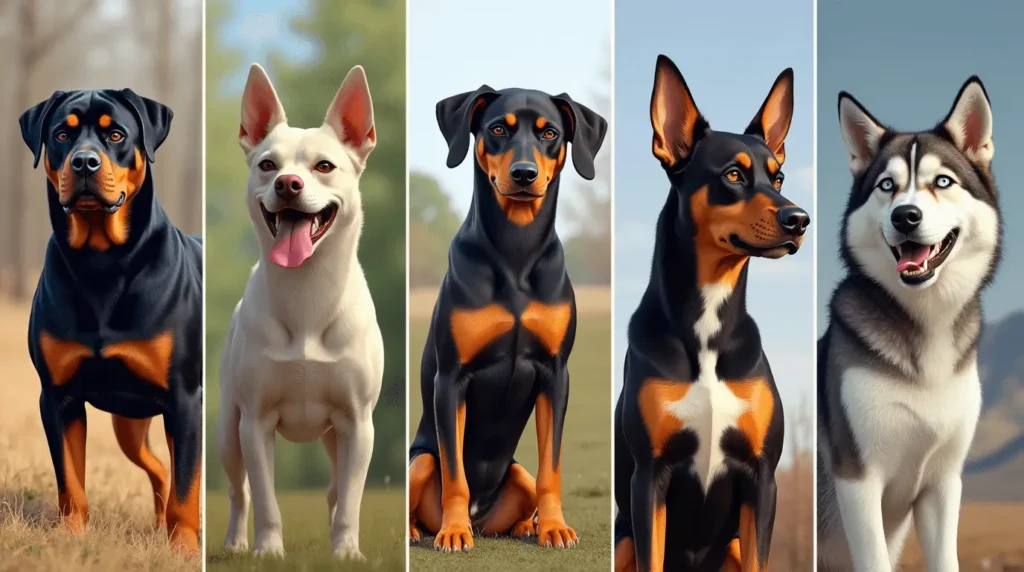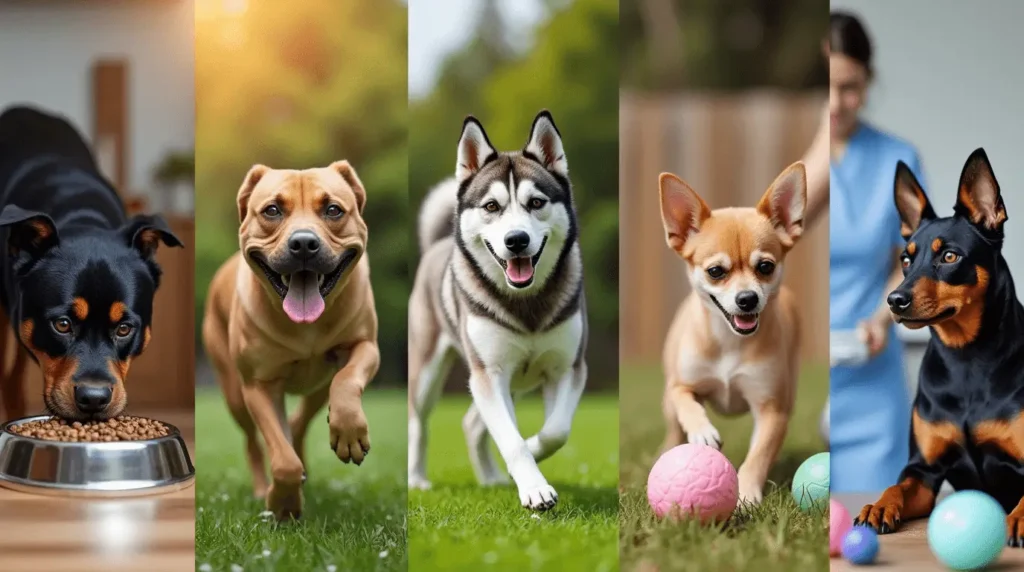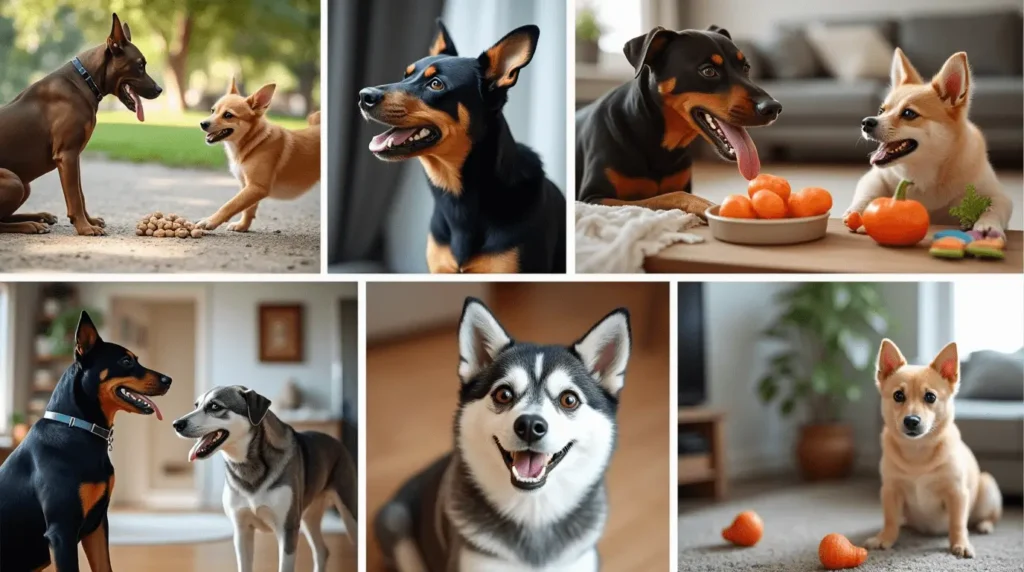Dangerous Dog Breeds: The Comprehensive Guide
Dogs are among the most popular pets worldwide, but some breeds are considered more dangerous than others. Understanding the characteristics of dangerous dog breeds and knowing how to care for and train them properly is crucial to ensuring a safe environment for both the dog and its owners. In this comprehensive guide to dangerous dog breeds, we’ll explore their traits, care requirements, and provide tips on how to manage, train, and ensure responsible ownership of these breeds.
Looking for the perfect pup? 🐶✨ Explore different dog breeds to find your ideal companion!
Dangerous Dog Breeds and Their Traits
1. Rottweiler
The Rottweiler is one of the most well-known dog breeds, thanks to its large, muscular build and strong personality. It’s known for being an excellent guard dog, fiercely loyal to its family. However, Rottweilers require strict, consistent training from an early age to avoid aggressive behavior. This breed is best suited for people who have experience with larger dogs and can provide it with ample space and exercise. They need regular physical activity to stay fit and mentally stimulated.
2. Pit Bull
Pit Bulls are powerful dogs with a courageous nature and are fiercely protective of their owners. Despite their bad reputation in some circles, Pit Bulls can be loving family pets if trained properly. They need continuous socialization training to avoid aggressive tendencies toward other animals and people. To maintain a happy and healthy Pit Bull, owners must ensure it has plenty of mental and physical activities to prevent boredom-induced behavior problems.
3. Doberman Pinscher
The Doberman is a smart, fast, and protective dog, making it one of the best guard dogs. It’s adaptable to various environments, but it requires precise training to avoid developing unwanted behavior. A Doberman’s intelligence means it can learn quickly, but it also means it needs constant mental stimulation and physical exercise. Without proper engagement, this breed might exhibit destructive or aggressive behavior.
4. Chihuahua
While often perceived as a small, harmless breed, Chihuahuas can be aggressive if not properly trained and socialized. Their small size and big attitude make them unpredictable, especially if they feel threatened. Socializing your Chihuahua early in life is crucial to ensure it behaves well around other pets and people. While they don’t need as much exercise as larger breeds, Chihuahuas still require regular walks and playtime to stay active.
5. Siberian Husky
The Siberian Husky is a strikingly beautiful dog known for its independent and strong-willed personality. While they may seem friendly and playful, Huskies can be aggressive if not trained properly. They need plenty of physical activity, such as running and hiking, as well as mental challenges to avoid boredom. If these needs are not met, Huskies may exhibit destructive behaviors like chewing or escaping.
Stay informed and safe around powerful pups 🐕⚠️ Learn about the most dangerous dog breeds in this in-depth guide!

How to Care for Dangerous Dog Breeds
1. Nutrition
Choosing the right food for your dog is essential for its overall health and well-being. A dog’s nutritional needs depend on several factors, such as its age, size, and activity level. Larger breeds like Rottweilers require food rich in protein to support muscle growth, while smaller dogs like Chihuahuas may need food that supports their immune system and overall health. Always consult your veterinarian for advice on portion sizes and food types suitable for your dog’s breed and age.
2. Exercise
Regular exercise is a crucial part of a dog’s life, especially for high-energy breeds like Pit Bulls and Huskies. These dogs need at least an hour of exercise every day to stay healthy. Smaller breeds, like Chihuahuas, require less exercise, but they still need regular walks and playtime. Exercise not only keeps your dog physically fit but also helps to relieve stress and prevent behavioral issues caused by boredom.
3. Health Care
Maintaining your dog’s health is vital. Regular vet visits are necessary to ensure your dog is up to date on vaccinations and check-ups. Pay attention to your dog’s dental health, as dental issues can lead to more serious health problems. Also, remember to trim your dog’s nails regularly and groom it as needed, depending on its coat type.

Training Tips for Dangerous Dog Breeds
1. Teaching Basic Commands
Teaching your dog basic commands such as “sit,” “stay,” and “come” is essential for creating a bond and managing your dog’s behavior. These commands can also help you maintain control over your dog in various situations. Positive reinforcement, like treats or praise, works best when training your dog to follow commands.
2. Dealing with Unwanted Behaviors
Breeds like the Pit Bull can develop undesirable behaviors, such as excessive barking or aggressive tendencies. To manage these behaviors, it’s important to use consistent, calm, and effective training techniques. Reward your dog when it displays good behavior and address negative behaviors with redirection or gentle correction. Consistency is key in behavior management.
3. Best Ways to Reinforce Good Behavior
Positive reinforcement is one of the most effective ways to encourage good behavior. When your dog behaves well, reward it immediately with a treat, praise, or a favorite toy. This helps your dog associate good behavior with positive outcomes, increasing the likelihood of repeat good behavior in the future.

Additional Tips for Caring for Dangerous Dog Breeds
Best Care Tips for Dangerous Dog Breeds
Provide your dog with love, attention, and care. Set aside time each day for play, training, and walks. Make sure your dog’s environment is safe and secure to prevent stress or anxiety. The more you engage with your dog, the better its behavior and happiness will be.
Healthy Food Alternatives for Dangerous Dog Breeds
If you’re looking for natural food alternatives for your dog, consider offering fresh vegetables like carrots or zucchini. You can also provide lean meats, such as chicken or turkey, without spices or seasonings. Always make sure that any new foods are safe for your dog and consult your vet if you’re unsure.
Storing Food for Dangerous Dog Breeds
To ensure your dog’s food stays fresh, store it in a cool, dry place. Keep the food container sealed tightly to prevent exposure to air, which can cause spoilage. Clean your dog’s food and water bowls regularly to maintain hygiene and prevent bacterial growth.
Frequently Asked Questions About Dangerous Dog Breeds
1. What is the Best Breed for Beginners?
For beginners, smaller and more manageable breeds, such as Labrador Retrievers or Beagles, are ideal. These breeds are friendly, easy to train, and typically well-mannered. They make great pets for first-time dog owners.
2. How Do I Deal with a Dog with Anxiety?
If your dog suffers from anxiety, providing a calm, stress-free environment can help. You can also use calming products, such as anxiety wraps or soothing music. If the anxiety persists, consult your veterinarian for additional advice or treatment options.
3. How Often Should I Bathe My Dog?
The frequency of bathing your dog depends on its breed and activity level. Most dogs only need a bath every 2-3 months, but dogs with longer coats or more active lifestyles may require more frequent baths. Always use dog-specific shampoo to avoid skin irritation.
Looking for the perfect pup? 🐶💖 Explore different dog breeds to find your ideal match!

